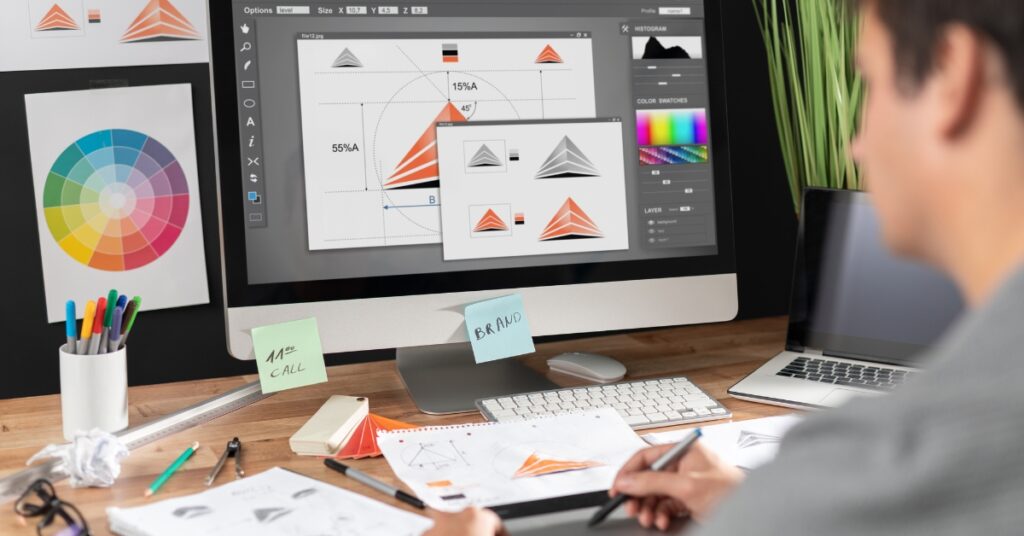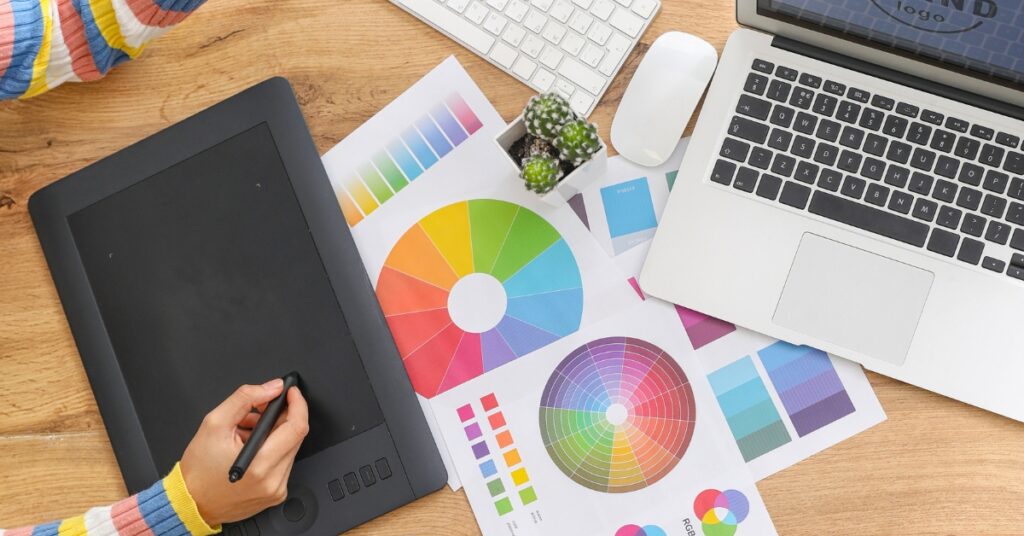A logo, often regarded as a visual emblem of a company, is a powerful symbol that represents its identity, values, and message. It’s the face of a brand, the first impression that potential customers encounter. While a well-designed logo can undoubtedly enhance brand recognition and awareness, it’s important to understand that a logo, on its own, has limitations. In this comprehensive exploration, we will delve into what a logo cannot do, why a logo is essential for your business, and common logo design mistakes to avoid.

The Significance of a Logo
The significance of a logo in branding is profound and multifaceted, serving as a pivotal element in establishing a brand’s identity, fostering trust, facilitating communication, and ensuring differentiation in the market.
Identity and Recognition
A logo essentially acts as the face of a brand, providing immediate recognition and distinguishing the business in a densely populated marketplace. Iconic logos, such as Nike’s swoosh and McDonald’s golden arches, exemplify how a simple visual symbol can become inextricably linked with a brand’s identity, evoking immediate association with their products and values.
Trust and Brand Loyalty
A well-crafted logo does more than just identify; it inspires trust and cultivates brand loyalty among consumers. It conveys a message of professionalism and consistency, reassuring customers of the brand’s commitment to quality and reliability. Over time, a logo transcends its initial function as a marker of identity to become a symbol of the brand’s enduring values and commitment to its customers.
Communication
A logo serves as a concise communication tool that encapsulates the essence of a business’s values, personality, and mission. It distills complex concepts into a singular, easily recognizable visual form, allowing customers to understand and connect with the brand on a deeper level. This communicative power is crucial for establishing an emotional bond between the brand and its audience.
Differentiation
In the competitive arena of the marketplace, a logo also plays a critical role in differentiation. It sets a brand apart, offering a unique visual identifier that distinguishes it from competitors, even in industries where products and services are similar. This differentiation is vital for capturing the attention of potential customers and positioning the brand in the minds of consumers.
The significance of a logo in branding extends beyond mere visual identification. It is an integral component that embodies the brand’s identity, assures customers of its reliability, communicates its core values, and distinguishes it in a crowded market. A thoughtfully designed logo is a powerful asset in building and maintaining a strong, recognizable, and trusted brand.

Things Your Logo Will Not Do
Logos are integral to establishing a brand’s visual identity, yet there are intrinsic limitations to what they can achieve on their own. Understanding these limitations is crucial for setting realistic expectations and leveraging other branding and marketing strategies effectively.
Conveying Complexity
A logo serves as a symbol for your brand, designed to be simple and memorable rather than comprehensive. It is not capable of communicating the full breadth of your business’s complexity, including the nuances of your products or services. A logo can suggest and evoke, but it cannot encapsulate every aspect of your business’s offerings or philosophy.
Building an Emotional Connection
While logos can become associated with the emotions tied to a brand, they are not in themselves tools for building deep emotional connections with customers. Such connections are cultivated over time through consistent and meaningful brand messaging, the quality and reliability of products or services, and positive overall customer experiences. These aspects work in tandem to create a brand relationship that goes beyond a mere visual symbol.
Highlighting Product or Service Benefits
A logo can symbolize your brand and hint at its domain or ethos, but it is not designed to communicate the specific benefits or features of your products or services. Detailed benefits and solutions provided by your offerings are more effectively communicated through targeted marketing materials, product descriptions, and direct customer engagement.
Instant Success
A common misconception is viewing a logo as a shortcut to achieving business success. However, a logo alone cannot guarantee market recognition, customer loyalty, or financial success. These goals are achieved through a holistic approach that encompasses strategic marketing, quality customer service, consistent brand communication, and offering unique value to customers. A logo is part of this broader strategy, contributing to brand recognition and coherence but not acting as the sole determinant of success.

Logo Design Mistakes to Avoid
When designing a logo, it’s crucial to navigate around common pitfalls to ensure that it serves its purpose effectively as a central element of your brand’s identity. Here are some critical logo design mistakes to avoid:
Lack of Versatility
Your logo should be functional and legible across a wide range of applications, from digital screens to physical printouts, and from small sizes like a business card to large formats such as billboards. A logo that loses clarity or appeal when scaled up or down, or when viewed on different platforms, significantly diminishes its effectiveness. Ensuring versatility also means the logo should work well in both color and black and white.
Complexity Overload
While creativity is valuable, an overly complicated logo can detract from its memorability and recognizability. Complex logos may also face reproduction challenges, particularly in smaller sizes or when specific printing methods are used. Aim for simplicity to ensure your logo is memorable and easily recognizable at a glance. This doesn’t mean your design has to be simplistic, but rather refined and distilled to its most impactful form.
Chasing Trends
It’s tempting to design a logo that feels modern and trendy, but trends come and go, leaving your logo looking dated. A timeless logo design ensures your brand remains relevant and avoids frequent rebrands, which can confuse your audience and dilute brand recognition. Strive for a balance between contemporary and classic design elements to create a logo that withstands the test of time.
Remember, your logo is a key facet of your brand identity but it’s just the beginning of building brand recognition and trust. It won’t solve all marketing challenges, convey every detail of your business, or build an emotional connection on its own. Effective branding requires a holistic approach, including a strong logo as part of a broader strategic framework that encompasses clear messaging, quality offerings, and consistent customer engagement.
Avoiding these common logo design mistakes can help set a solid foundation for your brand’s visual identity, making your logo a powerful emblem of your brand’s essence and values.



